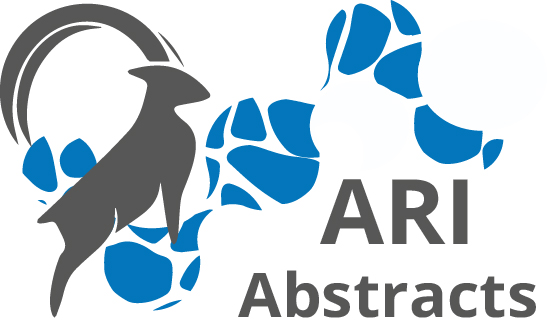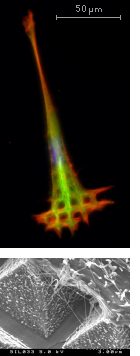Biosurf VI
Tissue-Surface Interaction
September 21-23, 2005, Ecole Polytechnique Fédérale
Lausanne (EPFL) Switzerland
Welcome
|
Introduction
BIOSURF VI is therefore specifically devoted to aspects of surface and interface science of materials used for sensing, drug delivery, tissue engineering and medical implants. The conference aims to highlight recent results in the science and clinical investigations from institutes worldwide working in this field, and to showcase valuable perspectives from industry. The collaboration between materials science, surface chemistry, immunology, molecular genetics, pharmaceutics, physics and clinical investigations is needed to create a platform for this field with a promising future. |
Image: Fibroblasts interaction with microfabricated pyramids. The avoidance of the peaks by the cytoskeleton and cell main cell body can be seen. With permission from Osian Meredith, AO Research Institute, AO Foundation, Davos, Switzerland. |
Scientific and Organization Committee
Heinrich Hofmann. EPF Lausanne, Switzerland
Jeffrey A. Hubbell. EPFL Lausanne, Switzerland
Margarethe Hofmann. Swiss Assoc. for Materials Technology, Switzerland
David W. Grainger. Colorado State University, USA
Marcus Textor. Lab for Surface Science & Technology, ETH Zurich,
Switzerland
Nicholas D. Spencer. Department of Materials, ETH Zurich, Switzerland
R. Geoff Richards. AO Research Institute, AO Foundation, Switzerland
Takao Hanawa. National Institute for Materials Science, Tsukuba,
Japan

